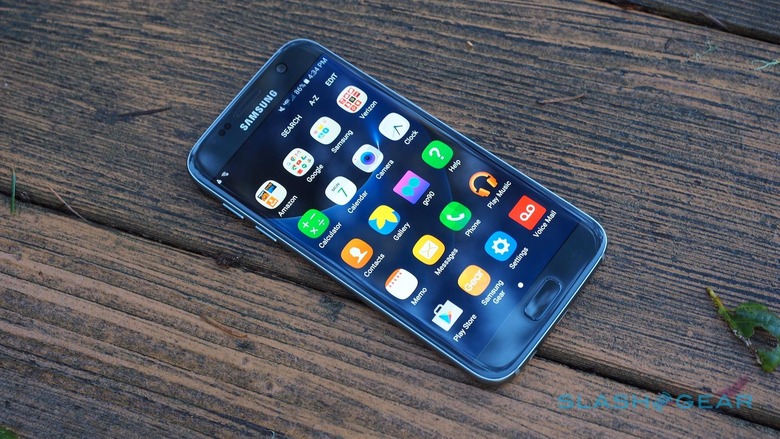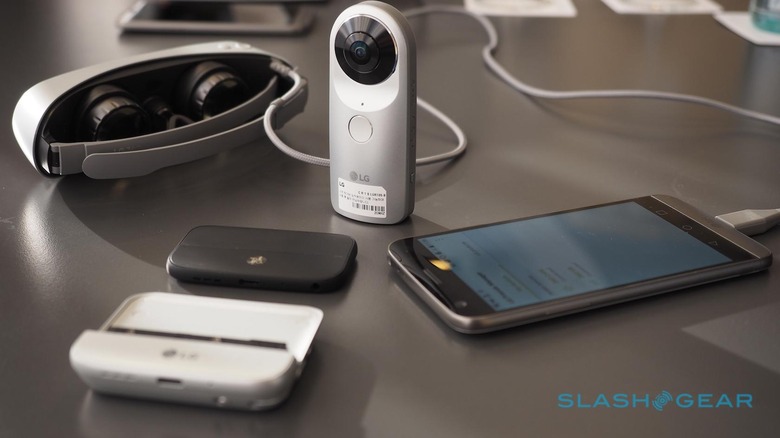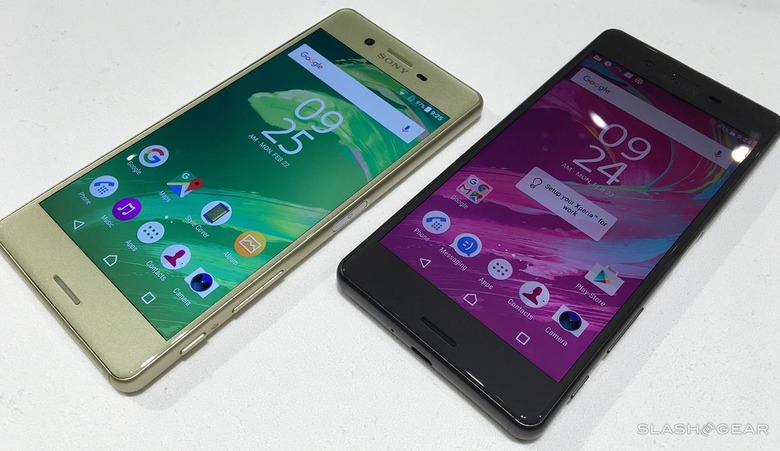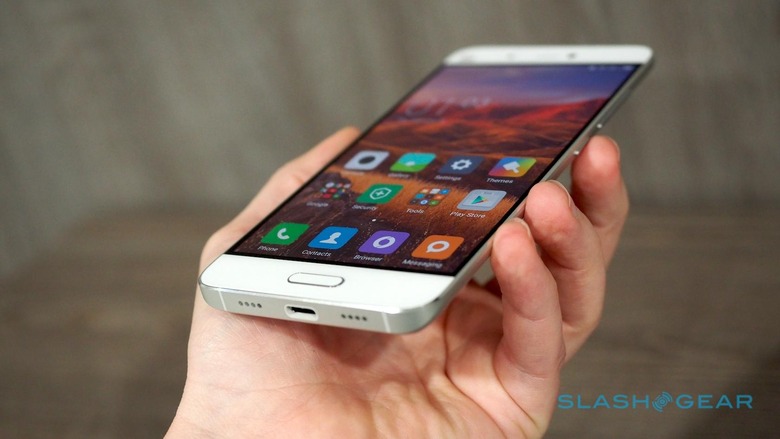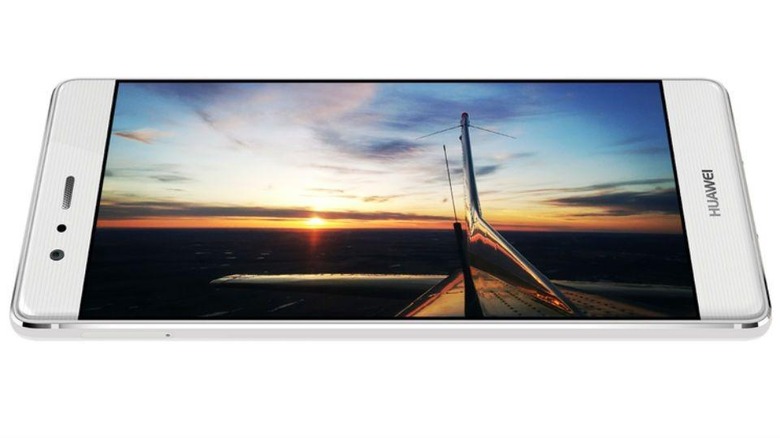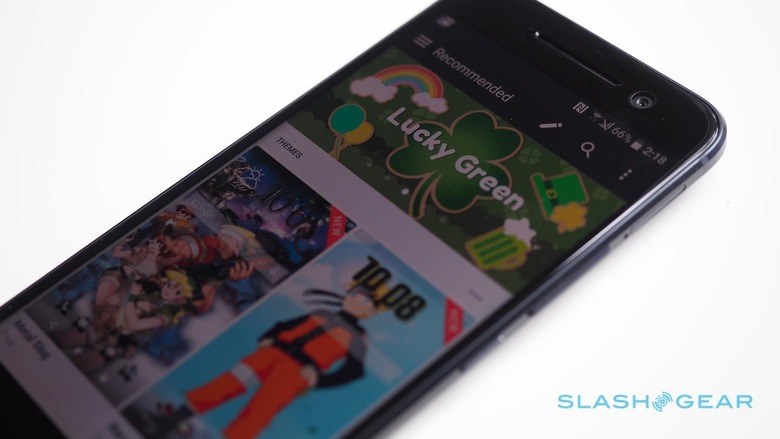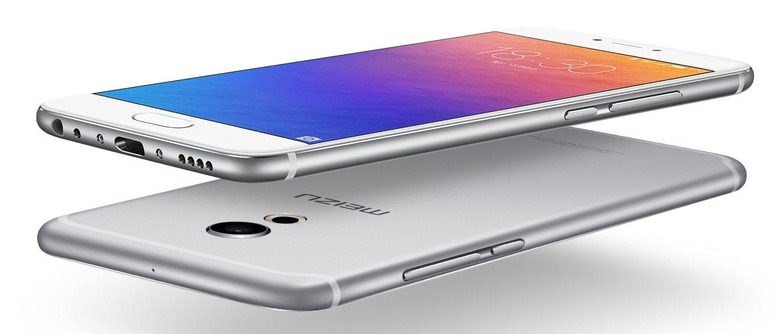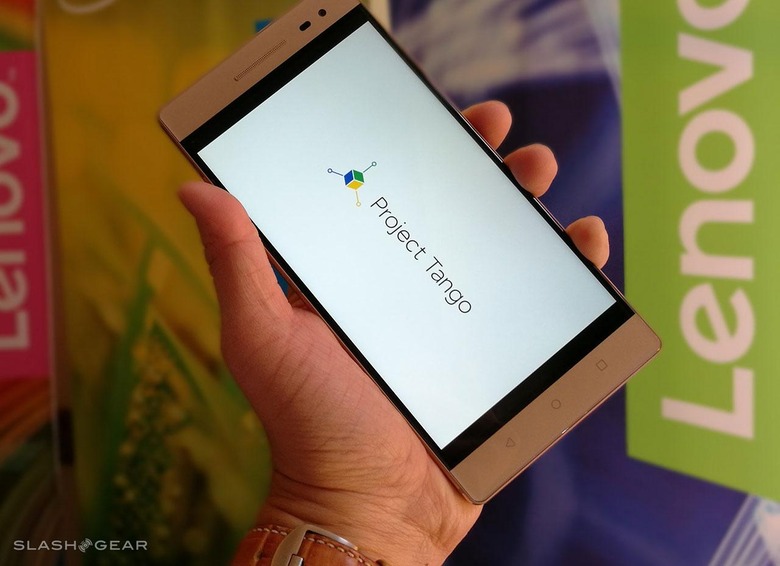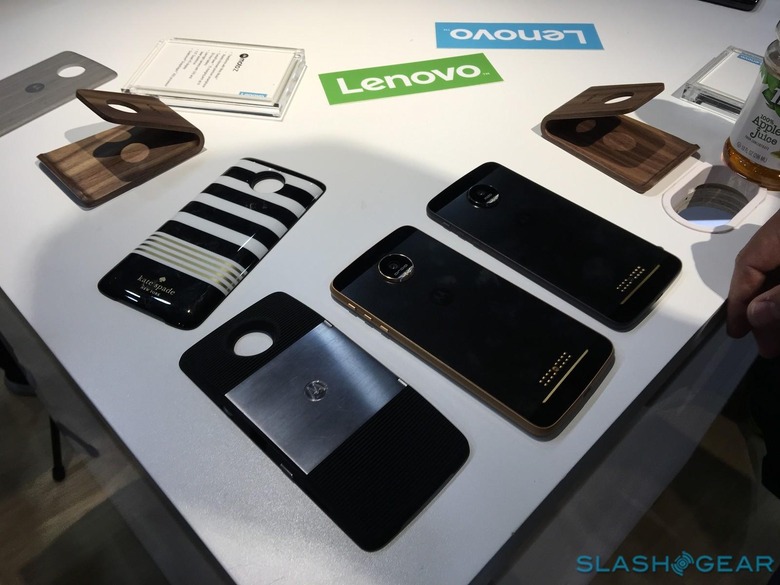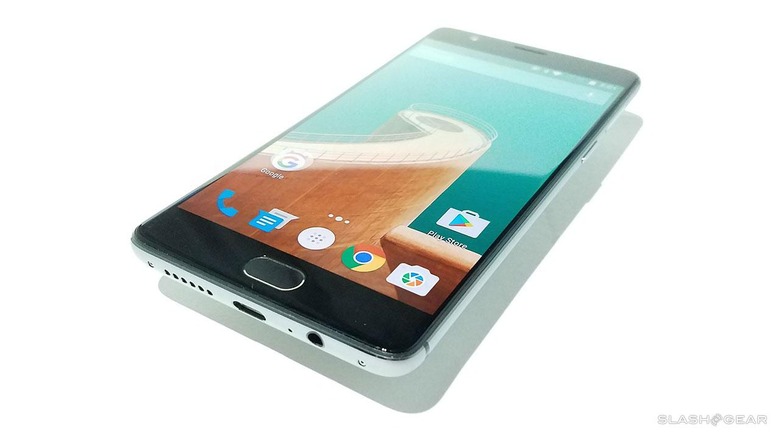The Best Android Phones Of 2016 - A Mid-Year Comparative Overview
Half of the year is almost over and save for some that release two smartphone flagships a year, most Android OEMs have already revealed their hands. That means it's the perfect time to take stock of some of the crème de la crème that manufacturers have to offer for 2016. Or at least what they consider to be the best. Who gets in and who is left out of the party? Of course, many of them share some similar specs and features, but each does bring something unique to the table, or promise to do so. Without further ado, there are 2016's stars, in order of appearance (a.k.a. reveal date).
Samsung Galaxy S7/S7 edge - The Veteran
Of the ten in this list, Samsung's early 2016 champions are probably the ones that took the least risk and had the least gimmicks. Almost like the old man in the crowd, the Galaxy S7 and Galaxy S7 edge instead aimed for refinement rather than flashy new features. It may defy logic as far as flamboyant features go, but it worked! Thanks to a near perfect set of specs and a very early launch, Samsung's first quarter finally showed hope for the company's coffers. Sure, we're still missing a removable battery, but the return of a microSD card slot and some ruggedness are exactly what the smartphone doctor ordered.
• CPU: Qualcomm Snapdragon 820 or Exynos 8890 Octa• RAM: 4 GB• Storage: 32 or 64 GB, microSD• Display: 5.1-inch QHD• Main Camera: 12 MP, F1.7, OIS• Secondary Camera: 5 MP, F1.7• Battery: 3,000 mAh• Dimensions: 142.4 x 69.6 x 7.9 mm• Weight: 152 g• Other Features: IP68, Quick Charge 2.0Samsung Galaxy S7 Review Review
LG G5 - The Shapeshifter
LG, on the other hand, had room for experimentation. The LG G4 last year did mildly well, at least compared to the Samsung Galaxy S6, that the Korean manufacturer saw the perfect opportunity to plunge head first into the future. Or at least part of it. It's still not the modular smartphone that the likes of Project Ara inspired, but it's as close as we're going to get at a commercial version. In addition to top of the line specs, the LG G5 also offers add-ons, both the removable kind and the merely-connected-via-wireless kind. Sadly, the current list of the former are far too few to consider this more than a gimmick. Fortunately, we still have almost a year before the next flaship cycle.
• CPU: Qualcomm Snapdragon 820• RAM: 4 GB• Storage: 32 GB, microSD• Display: 5.3-inch QHD• Main Camera: 16 MP, F1.8, Wide 8 MP, F2.4, OIS, Laser AF• Secondary Camera: 8 MP, F2.0• Battery: 2,800 mAh• Dimensions: 149.4 x 73.9 x 7.7 mm• Weight: 159 g• Other Features: Modular, Quick Charge 3.0
Review
LG G5 vs Galaxy S7 camera WARLG G5 Camera Review Part II: Trip to Mt. RushmoreLG G5 Review Part III: what no other phone has
Sony Xperia X Performance - The Literal Hottie
Sony just can't seem to take a break. That or it can't make up its mind. After a disastrous Xperia Z4/Z3+, the Japanese company was able to recuperate a bit with the Xperia Z5 trio. And then surprisingly, it decided to practically axe the premium Xperia Z line, to be replaced by the Xperia X generation. Promising exquisite design paired with intelligence, the Xperia X Performance, slightly beefier than the nominal Xperia X flagship, touts a new Predictive Hybrid AF camera that can smartly identify subjects and adjust accordingly. Unfortunately, it might not be so smart about thermal control, as there is already a report about overheating. It doesn't seem to be widespread, however, but the trauma of 2013's "hero" device should give Sony fair warning.
• CPU: Qualcomm Snapdragon 820• RAM: 3 GB• Storage: 32 GB, microSD• Display: 5.0-inch FHD• Main Camera: 23 MP, F2.0, Predictive Hybrid AF• Secondary Camera: 13 MP, F2.0• Battery: 2,700 mAh• Dimensions: 144.8 x 71.1 x 7.6 mm• Weight: 164 g• Other Features: IP65/IP68, Quick Charge 2.0, STAMINA ModeSony Xperia X hands-on: unabashedly replacing Z
Xiaomi Mi 5 - The Thrist Shopper
Xiaomi has never been one to compete head to head when it comes to specs. Instead, its popularity is attributed to a combination of respectable hardware paired with dirt cheap prices, with a more direct customer relationship on top. That is clearly seen in the Xiaomi Mi 5, one of the 2016 flagships not to sport a QHD screen. That said, the Chinese superstar OEM didn't skimp on other areas this time, offering the latest Snapdragon 820 and even, in some cases, 6 GB of RAM. It also upgraded its design style from plastic to ceramic. Sadly, it still hasn't upgraded its territory, as Xioami's smartphones are still out of reach in the US. At least, officially.
• CPU: Qualcomm Snapdragon 820• RAM: 4 or 6 GB• Storage: 32 or 64 or 128 GB• Display: 5.15-inch FHD• Main Camera: 16 MP, F2.0, OIS, Phase Detection AF• Secondary Camera: 4 MP, F2.0• Battery: 3,000 mAh• Dimensions: 144.6 x 69.2 x 7.3 mm• Weight: 139 g• Other Features: 4-axis OIS, Quick Charge 3.0Xiaomi Mi 5 hands-on: The surprise buzz-maker
Huawei P9 - The Two-Eyed
Huawei was quite proud of its association Leica, the first partnership between the famed German camera maker and a Chinese smartphone maker. But in fact, it has two reasons to be proud of the Huawei P9. A colored one, and a black and white one. There have been many smartphones sporting two camera sensors on their rears, but Huawei was the first one to think slightly out of the box. Employing a monochrome only sensor, the P9 promises to increase the contrast and detail of its images. It is also notable to be the one of two in this list not running on a Qualcomm chip. But given it only drives a Full HD screen, the Kirin 955 and 3 GB of RAM are noted to be quite OK for the job, or so says AnTuTu.
• CPU: HiSilicon Kirin 955• RAM: 3 or 4 GB• Storage: 32 or 64 GB, microSD• Display: 5.2-inch FHD• Main Camera: Dual 12 MP F2.2, Phase Detection AF• Secondary Camera: 8 MP, F2.4• Battery: 3,000 mAh• Dimensions: 145.0 x 70.9 x 7 mm• Weight: 144 g• Other Features: dual cameras (colored, monochrome)Huawei P9 debuts with dual Leica-certified cameras
HTC 10 - The Rebound
HTC might finally be having a good year. In addition to the fame and possibly profits that the HTC Vive virtual reality headset has brought it, it has also finally put out a worthy successor to its HTC One flagship series. Except it's no longer an HTC One. Perhaps trying to break from the past, and the curse, it is simply called the HTC 10. It finally gets into the QHD race and doesn't have a processor that ever so slightly overheats. It also has changed its design a bit, which may or may not work in its favor. The HTC 10 still isn't selling like pancakes and may not be enough to pull HTC out of a slump. But at least it's not getting mostly terrible reviews either.
• CPU: Qualcomm Snapdragon 820• RAM: 4 GB• Storage: 32 or 64 GB, microSD• Display: 5.2-inch QHD• Main Camera: 12 MP, F1.8, OIS, Laser AF• Secondary Camera: 5 MP, F1.8, OIS• Battery: 3,000 mAh• Dimensions: 145.9 x 71.9 x 9.0 mm• Weight: 161 g• Other Features: UltraPixel 2, Quick Charge 3.0HTC 10 Camera Review: Teething pains for UltraPixel 2HTC 10 Review
Meizu PRO 6 - The Stepchild
Samsung and Apple have been at each other's throats for years while at the same time shaking hands behind the scenes. The stereotypical frenemies. If they where anthropomorphized, they would probably be in a very rocky, love/hate, on and off relationship. And the Meizu PRO 6 would be their offspring. At least visually speaking. Meizu's latest flagship checks all the right boxes when it comes to specs. But most people will probably notice it more as a cross between Samsung's and Apple's best features and designs. Of course, it's hard today not to even touch something that has been done before, and, to its credit, the PRO 6 isn't simply a blatant ripoff. Still, if you ever wanted a combination of Android, Samsung, and the iPhone, this would be it.
• CPU: MediaTek MT6797T Helio X25• RAM: 4 GB• Storage: 32 or 64 GB• Display: 5.2-inch FHD• Main Camera: 21 MP, F2.2, Laser AF, Phase Detection AF• Secondary Camera: 5 MP, F2.0• Battery: 2,560 mAh• Dimensions: 147.7 x 70.8 x 7.3 mm• Weight: 160 g• Other Features:Meizu PRO 6 Review Part I: The Galaxy iPhone missing link
Lenovo PHAB2 - The Dancer
Lenovo's not so unexpected smartphone is truly the odd one in the batch. For one, it would barely qualify as a smartphone with it's hulking size, though some do consider even the largest phablets as such. It is also the only one that runs on a mid-range processor, though the Snapdragon 652 teeters over the edge of that classification. What made the PHAB2 Pro qualify for our Top 10 is, as you might have guessed it, its ties with Project Tango. Although it has yet to be proven in the hands of ordinary mortals, the technology does offer opportunities for creativity and fun, and maybe some serious business as well. It also doesn't hurt that, despite the processor, the Lenovo PHAB2 Pro sports a QHD screen and 4 GB of RAM.
• CPU: Qualcomm Snapdragon 652• RAM: 4 GB• Storage: 64 GB, microSD• Display: 6.4-inch QHD• Main Camera: 16 MP, Phase Detection AF, depth sensor, motion tracking• Secondary Camera: 8 MP, F2.2• Battery: 4,050 mAh• Dimensions: 179.8 x 88.6 x10.7 mm• Weight: 259 g• Other Features: Project TangoLenovo PHAB2 Pro (Tango) first impressions and hands-on video
Moto Z Force - The Quick Change Artist
The Moto Z possibly evokes some conflicted feelings. On the one hand, you have a top of the line Android smartphone coming from the makers of the the famed (first) Moto X. On the other hand, it might not exactly feel like a Moto X, especially considering there will be a new Moto X, according to Lenovo. Those conflicted feelings might also manifest themselves with the biggest feature the Moto Z and Moto Z Force, the latter the only so slightly higher spec'ed of the two. They're calld "Mods", but they're not exactly the modular parts that the likes of the LG G5 or Project Ara inspire. They're more like "modifications" that you slap on and take off on a whim. Not that it's a bad thing, but it's more like a performer quickly changing clothes to fit a role than changing body parts.
• CPU: Qualcomm Snapdraggon 820• RAM: 4 GB• Storage: 32 or 64 GB, microSD• Display: 5.5-inch QHD• Main Camera: 21 MP, F1.8, OIS, Laser AF, Phase Detection AF• Secondary Camera: 5 MP, F2.2• Battery: 3,500 mAh• Dimensions: 155.9 x 75.8 x 6.99 mm• Weight: 163 g• Other Features: Moto Mods, TurboPower ChargingMoto Z first impressions and hands-on
OnePlus 3 - The Upstart
OnePlus has always cried "Never Settle" as its motto, but there have been cases where it did have to make compromises along the way. The OnePlus 3 is no exception. Qualcomm Snapdragon 820? Check. Quad HD screen? Nope. Fast charging via USB-C? Check. Interoperability with other USB-C cables? Not so much. Still, with a $400 price tag, and finally no more need for exclusive invites, it's hard not to be tempted by this flagship that does finally look its part. Except for the still Full HD screen, that is. At least it's in good company, with its compatriots Xiaomi and Huawei.
• CPU: Qualcomm Snapdragon 820• RAM: 6 GB• Storage: 64 GB• Display: 5.5-inch Full HD• Main Camera: 16 MP, F2.0, OIS, Phase Detection, Sony• Secondary Camera: 8 MP• Battery: 3,000 mAh• Dimensions: 152.7 x 74.7 x 7.35• Weight: 158 g• Other Features: DASH Charge (fast charging)OnePlus 3 Review
Wrap-up
The Android smartphone market has never been at a loss for choice. Here we already have 10 flagships, and they're definitely not the only ones. Though sometimes, that sheer number of choices also works against the platform, paralyzing consumers with the dilemma of which one to spend their precious money on. With specs nearly identical nowadays, the choice boils down to your proclivities, for serious business, experimental fun, or budget saver. Or maybe even none of the above. The choice is yours to make, and that's the freedom that Android offers.

